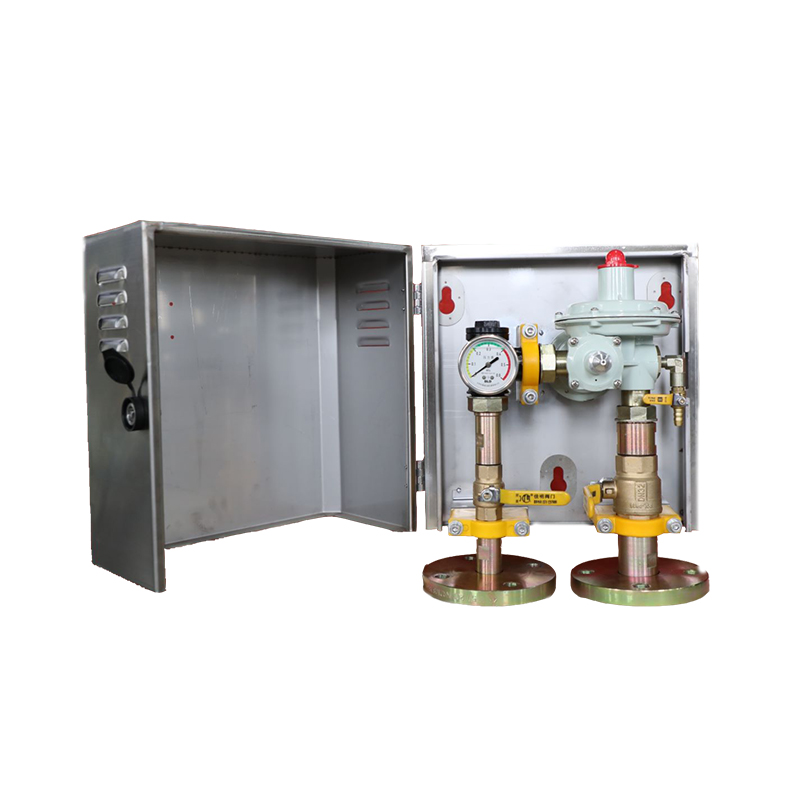
Dec . 04, 2024 16:30
Back to list
Understanding the Functionality of Pressure Regulation Devices in Various Applications
Understanding Pressure Regulating Devices Functionality and Applications
Pressure regulating devices are crucial components in various industries, ensuring the safe and efficient operation of systems that rely on controlled pressure levels. These devices serve to maintain a consistent output pressure, irrespective of fluctuations in the input pressure or changes in flow rates. Their applications span across a multitude of fields including HVAC systems, natural gas distribution, water supply networks, and industrial processes.
At their core, pressure regulators function by automatically adjusting the flow of fluid to maintain a preset pressure level. They can be mechanical, relying on springs and diaphragms, or electronic, utilizing sensors and microcontrollers for more advanced control. Regardless of the technology, the primary goal remains the same to stabilize pressure to protect downstream equipment and ensure optimal performance.
One of the most common types of pressure regulating devices is the pressure relief valve. This safety device protects equipment and piping systems from overpressure conditions. It accomplishes this by opening to allow fluid to escape when the pressure exceeds a predetermined threshold, thereby preventing potential damage or failure. Pressure relief valves are critical in industries like oil and gas, where maintaining the integrity of pipelines and storage facilities is paramount.
Another significant category is the pressure reducing valve, which is designed to lower the incoming pressure of a fluid to a more manageable level. In HVAC systems, for example, it ensures that the pressure of the refrigerant remains at an optimal level for efficient system operation. In water distribution networks, pressure reducing valves help to maintain safe pressure levels, preventing pipe bursts and ensuring the longevity of the infrastructure.
pressure regulating device

Pressure regulating devices also play a vital role in natural gas applications. They are used to manage the pressure of gas being distributed from high-pressure transmission lines to low-pressure distribution systems. This regulation is essential for ensuring the safety and reliability of gas delivery to residential and commercial consumers.
The importance of pressure regulating devices can also be observed in the pharmaceutical and food industries, where maintaining precise pressure levels is critical for product quality and safety
. In these contexts, regulators ensure that processing conditions remain stable, which is essential for consistency and compliance with health regulations.Modern advancements in technology have led to the development of smart pressure regulators that integrate with automated systems. These devices utilize IoT (Internet of Things) technology to provide real-time monitoring and adjustments. They can communicate with other system components, compile data for predictive maintenance, and enhance overall system efficiency. This not only reduces the risk of pressure-related incidents but also optimizes resource consumption.
In summary, pressure regulating devices are indispensable in ensuring the safety, efficiency, and reliability of various systems across multiple industries. Their ability to maintain stable pressure levels helps protect equipment, enhance performance, and ensure compliance with regulatory standards. With the ongoing advancements in technology, the future of pressure regulation looks promising, potentially leading to even greater efficiency and safety in fluid handling systems.
As industries continue to evolve and face new challenges, the role of pressure regulating devices will undoubtedly grow in significance, paving the way for more innovative solutions and applications. Understanding their functionality and the critical roles they play can help operators and engineers better design and maintain systems that rely on precise pressure management, ultimately contributing to overall system reliability and performance.
Latest news
-
Safety Valve Spring-Loaded Design Overpressure ProtectionNewsJul.25,2025
-
Precision Voltage Regulator AC5 Accuracy Grade PerformanceNewsJul.25,2025
-
Natural Gas Pressure Regulating Skid Industrial Pipeline ApplicationsNewsJul.25,2025
-
Natural Gas Filter Stainless Steel Mesh Element DesignNewsJul.25,2025
-
Gas Pressure Regulator Valve Direct-Acting Spring-Loaded DesignNewsJul.25,2025
-
Decompression Equipment Multi-Stage Heat Exchange System DesignNewsJul.25,2025

